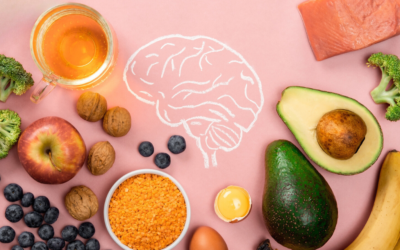Obesity rates have tripled in the past 45 years, increasing the prevalence of other chronic diseases including Non-Alcoholic Fatty Liver (NAFL) and Type 2 Diabetes. In fact, reported prevalence rates of NAFL are as high as 50-70%, which also increases the prevalence of Type 2 Diabetes two-to-three fold.
Lifestyle modification including diet is the cornerstone in the treatment and prevention of chronic disease including NAFL. Studies have shown that the percentage in energy from dietary fat and carbohydrate can improve liver fat (scientifically known as Intra-Hepatic Lipid, IHL) however macronutrient quality is also of importance i.e., saturation of fatty acids and glycemic index (GI).
Whilst there are several studies showing improvements in IHL from a low saturated fat, low GI diet, they were performed under overfeeding conditions (or extreme differences in GI or saturated fat intake) to maximise the contrast between diets.
A 2019-2020 study at Maastricht University Medical Centre in the Netherlands investigated the effect on liver fat content and substrate metabolism of both reducing GI and saturated fat intake but in practical, realistic amounts under isocaloric conditions.
Thirteen overweight/obese individuals participated in a randomized crossover trial consisting of a two-week high-GI/SFA diet and a two-week low-GI/SFA diet separated by a washout period of at least 4 weeks with testing at the end of each period. Macronutrient composition was identical with both diets. See table below of an example diet from the study. Normal food items and a macronutrient composition typically consumed by the general population was used.
| Meal | High Saturated fat, High GI | Low Saturated Fat, Low GI |
| Breakfast |
Tiger bread |
Confirmed low GI Dutch breakfast bread |
| Lunch |
Tiger bread |
Confirmed low GI rye bread |
| Dinner |
Mashpot – smoked sausage, mashed potato, vegetables |
Pasta salad with chicken |
What was measured at the end of each intervention?
- IHL content/composition and liver glycogen
- Fasted and postprandial hepatic de novo lipogenesis
- Glycemic and metabolic responses
Results
- IHL was significantly lower (28%) after the two-week low-GI, low saturated fat diet compared to the two week high GI, high saturated fat diet.
- The glycemic response to the low GI, low saturated fat diet was reduced (p < 0.05).
- Hepatic glycogen content, hepatic de novo lipogenesis, hepatic lipid composition, and substrate oxidation during the night were similar between the two diet
Conclusions
In just two weeks, changes in macronutrient quality can have drastic effects on liver fat content and postprandial glycemia. The intervention diets did not differ in calories, total fat and carbohydrates, which highlights the importance of macronutrient quality in the diet.
Given that adherence to treatment recommendations amongst people with chronic disease averages around 50%, recommending a staged approach, starting with diet quality (a low GI, low saturated fat) may be more achievable. Once a low GI, low saturated fat diet is adopted, the next focus would be to reduce calorie, carbohydrate and fat quantity with weight loss being the desired outcome.
References
- Basset-Sagarminaga, J et al. Replacing Foods with a High-Glycemic Index and High in Saturated Fat by Alternatives with a Low Glycemic Index and Low Saturated Fat Reduces Hepatic Fat, Even in Isocaloric and Macronutrient Matched Conditions. Nutrients 2023, 15, 735.
- World Health Organisation. Adherence to long-term therapies: evidence for action. Geneva: WHO; 2003.


